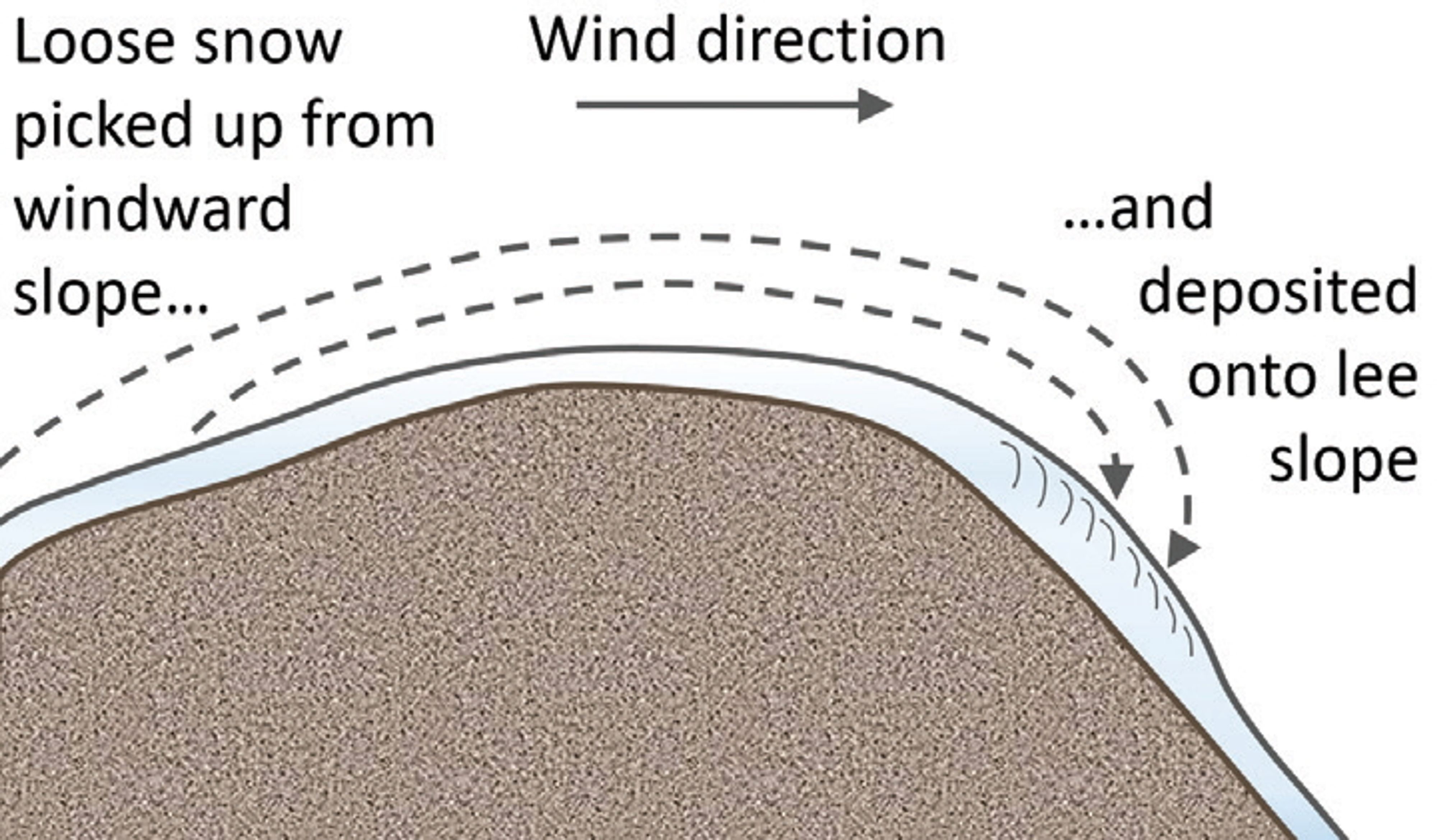Slope Aspect
The aspect, or the direction a slope is facing, also plays a role in avalanche formation. The aspect of a slope relates to both sun and wind exposure. Avalanche forecasts will specify which aspects are affected by each avalanche problem.
Wind
How the slope is oriented to the prevailing wind is an important consideration for terrain management. Moderate to strong winds will move loose surface snow and new falling snow from slopes facing the wind (windward) to slopes facing away from the wind (leeward).
Wind slabs are one of the eight avalanche problems identified in avalanche forecasts, and where they form varies across the landscape. Wind blowing across a slope can lead to cross-loading, with slabs forming on the lee side of terrain features such as ribs and gullies. Sometimes the wind will blow in the opposite direction from normal, known as reverse loading, creating wind slabs in unexpected places.

Sun
Slopes that face the sun are affected by solar radiation. This can result in the formation of crusts created by warmer temperatures, and the snowpack is often more shallow than on shaded aspects. Periods of strong sunshine can warm and weaken these slopes rapidly.
Slopes facing away from the sun (generally north and east) will usually have a deeper snowpack. These shady slopes are where you’re more likely to find weaker layers, and the cooler temperatures tend to preserve the weak layers longer.

Dig Deeper: Wind Speed and Seasonal Solar Effect +
Wind speed
The ability of the wind to transport snow varies greatly, depending on the wind strength and the hardness of the surface snow. The ideal formula for the creation of wind slabs is moderate winds (25–40 km/hr) combined with surface snow that is loose and easy to transport. Light winds (<25 km/hr) aren’t as effective at transporting snow. Strong winds (>40 km/hr) tend to disperse the snow over a wide area rather than depositing it where it can form a slab.
Seasonal Solar Effect
Solar effect will change as the winter progresses. Earlier in the season, the sun’s impact is seen mainly on south and west facing slopes. Later in the season, as the days get longer, eastern aspects will also start to be affected by the sun, while the sun’s effects will be even stronger on west aspects.